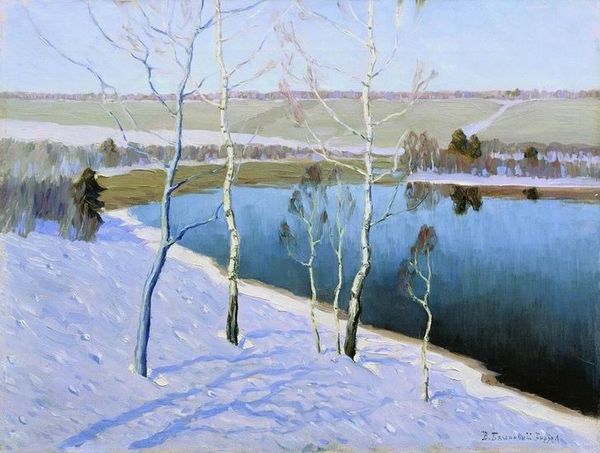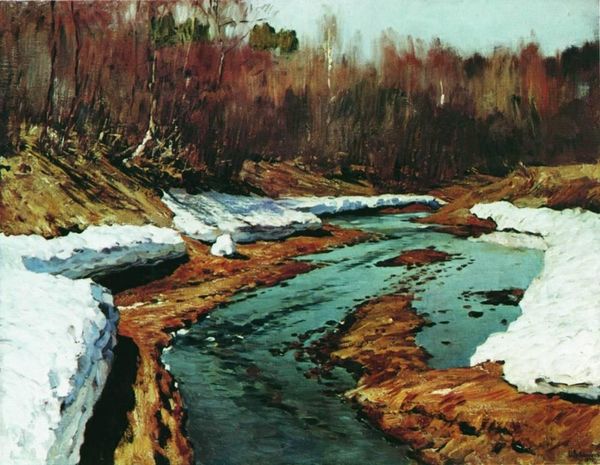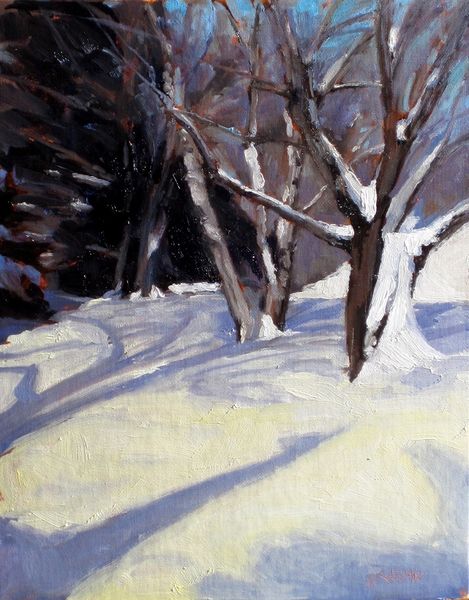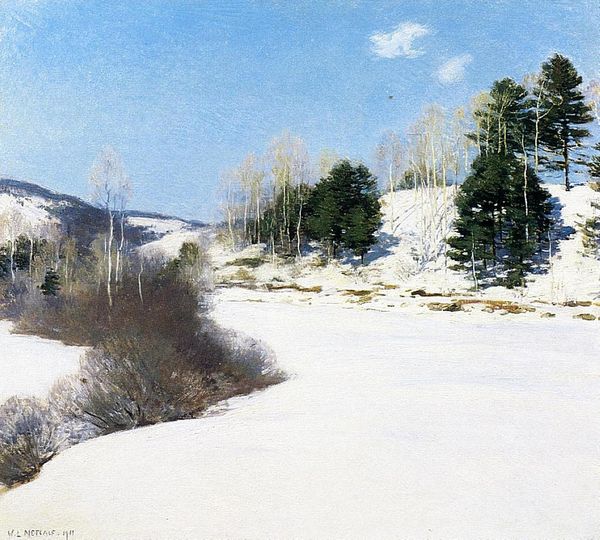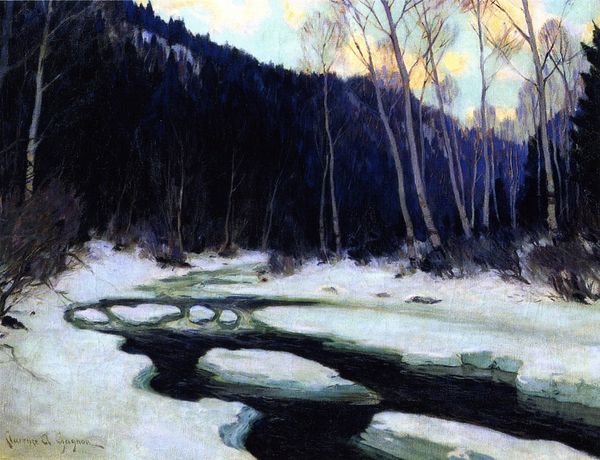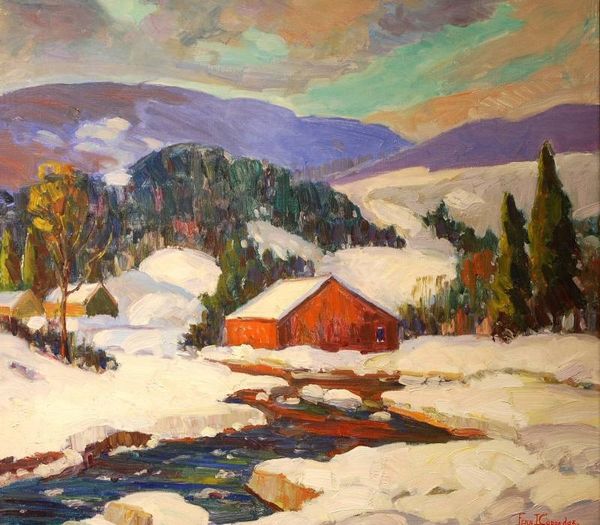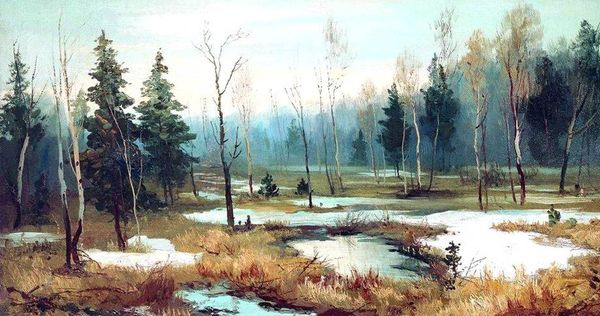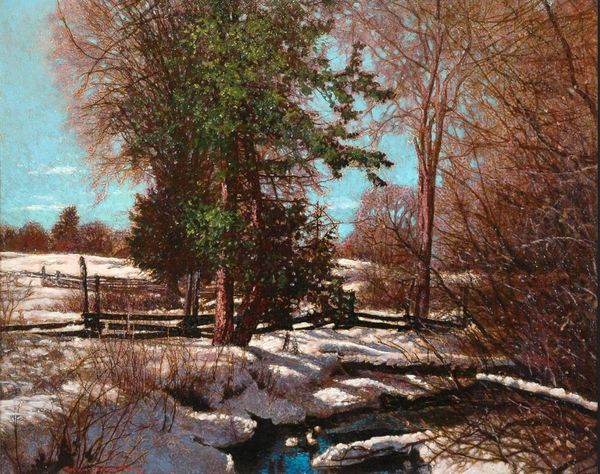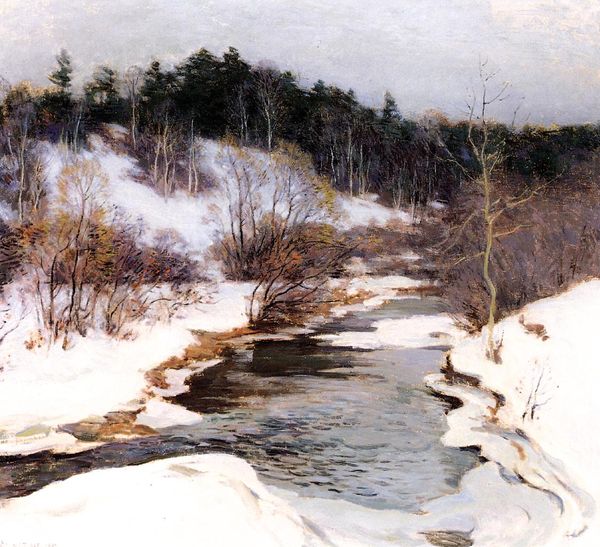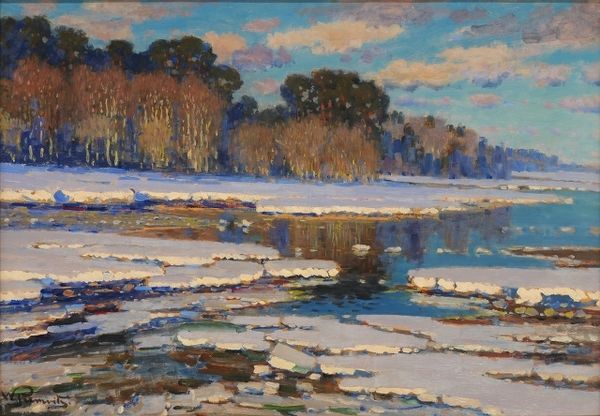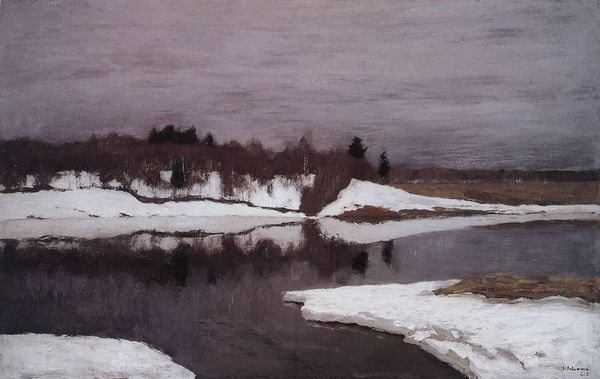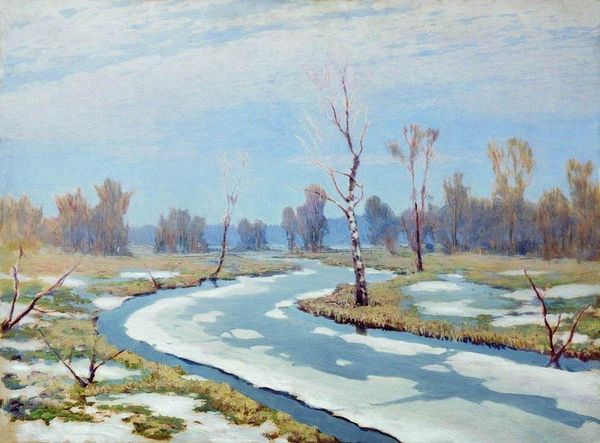
Dimensions: 43.18 x 53.34 cm
Copyright: Public domain
Editor: We’re looking at "Trapper’s Cabin," painted by Frank Johnston in 1940. It's an oil painting, and the snow-covered landscape is really striking. The cabin feels so isolated, but the path suggests someone is still out there, braving the elements. What are your initial thoughts when you see this work? Curator: It speaks to the Canadian identity of the time, doesn’t it? Johnston, originally part of the Group of Seven, depicts this solitary cabin scene. We see here the romanticism of the rugged individual against the vastness of nature. It ties into the narratives promoted around Canadian identity and the pioneer spirit, especially considering this was painted on the eve of the Second World War. Does it resonate with you in that sense? Editor: I see that. The painting does portray the Canadian landscape as something powerful, even imposing. I guess I was focusing more on the individual and their small struggle for survival. But is that rugged individualism romantic, or idealized? Curator: That’s the tension, isn't it? It *is* romanticized, and that ideal serves a purpose. By 1940, many Canadians were moving to urban centers. Paintings like these, displayed in galleries and reproduced, reminded people of a supposedly simpler past, reinforcing national identity when faced with external and internal change. Do you think that focus on the land then, ignores some complex political history, perhaps of marginalized communities? Editor: Absolutely. It’s a constructed narrative, a powerful image of a specific lifestyle which, as you say, ignores others. It's thought-provoking to see how a simple landscape can carry so much cultural baggage. Curator: Exactly. Art is never made in a vacuum, is it? Thanks for highlighting that interplay, and looking deeper beyond a purely surface reading of the work.
Comments
No comments
Be the first to comment and join the conversation on the ultimate creative platform.
